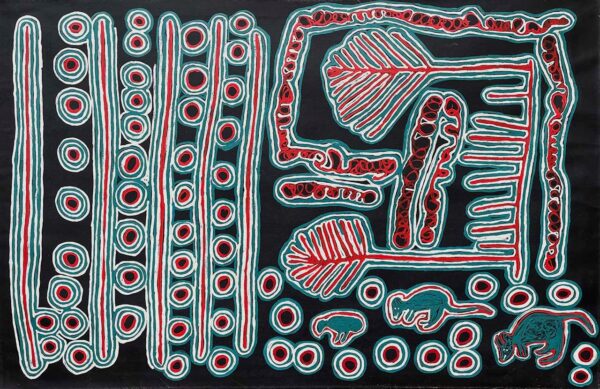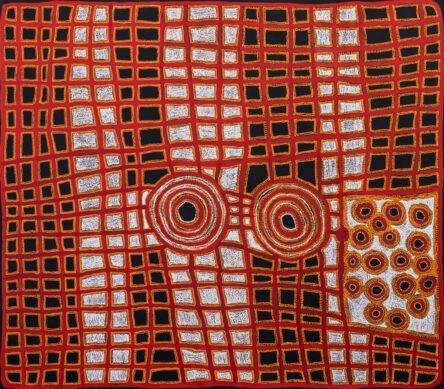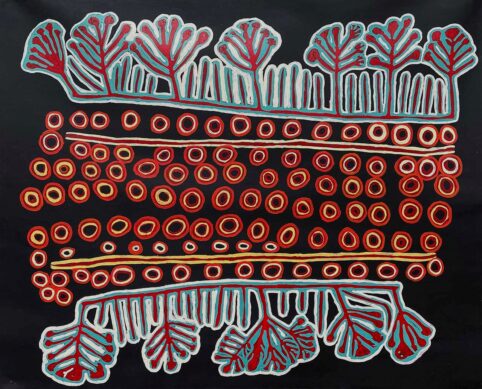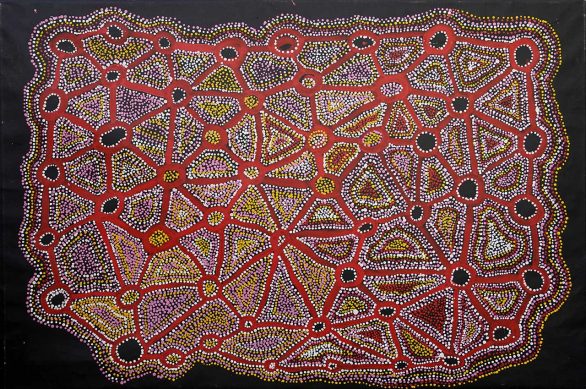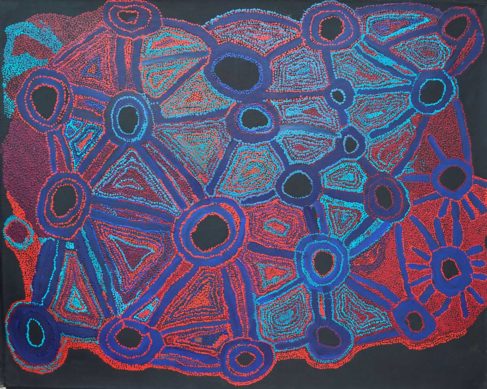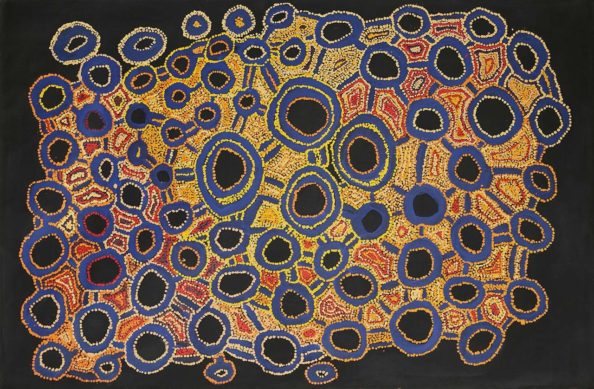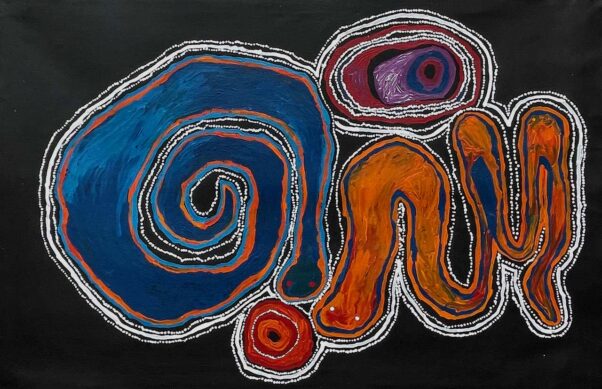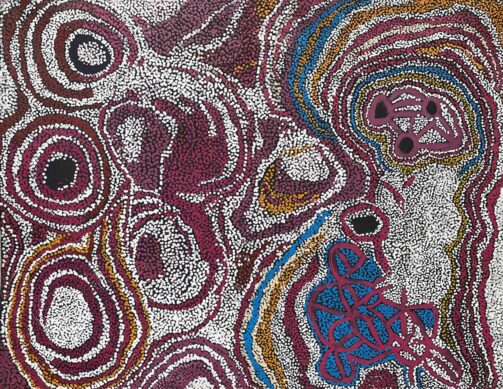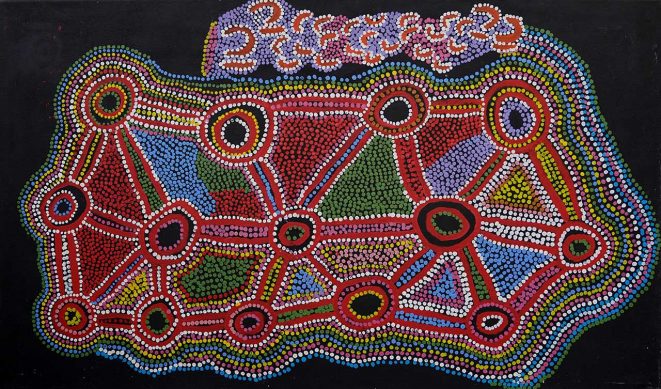Spinifex Aboriginal Art
A selection of paintings showing the styles from this Aboriginal art region - some paintings may still be available for sale, while some may have been sold.
The Pitjantjatjara Aboriginal people from the desert community of Tjuntjuntjara, 700 km north east of Kalgoorlie in Western Australia, are known as the Spinifex People. They were dispossessed from their homelands in the Great Victorian Desert in the 1950’s, when their country was taken over for the Maralinga Atomic testing that was carried out between 1952 and 1957 in a joint operation between the British and Australian governments.
During that time many Aboriginal people were moved to missions including Cundeelee and Warburton in Western Australia, which were hundreds of kilometres away from their traditional lands. About 200 Aboriginal people were recorded as still being on the Spinifex homelands in the period 1955 to 1963, and most of these were moved to mission settlements.
In the early 1980’s Cundeelee mission closed, and the Spinifex People were moved again before eventually settling at Tjuntjuntjara, a newly selected outstation camp in the south-western corner of the Spinifex homelands. In 1992 the High Court of Australia gave recognition to Native Title, a process which was to lead to the Aboriginal people of the Spinifex country being handed title to their homelands in November 2001.
The Spinifex Arts Project was initiated in 1996 as part of the process of documenting the connection between the Spinifex People and their land. The role of Aboriginal art grew rapidly as way for the community to portray people’s traditional ownership of country, and to receive financial benefit from that relationship.
Spinifex Arts Project – 20th Anniversary Exhibition
Spinifex Artists – Exhibition
Tjuntjuntjara Punu Project – Exhibition

